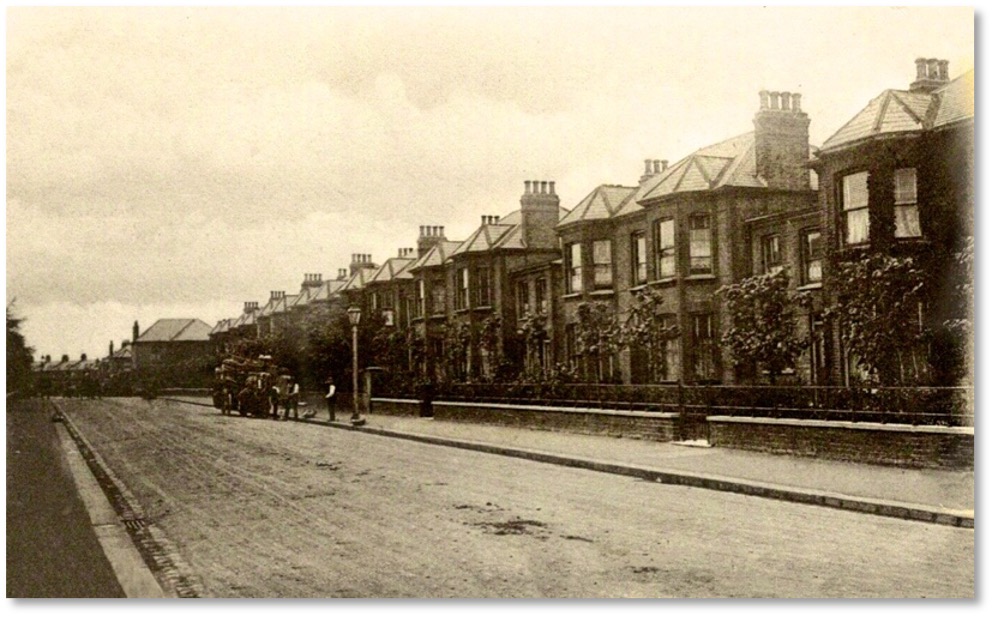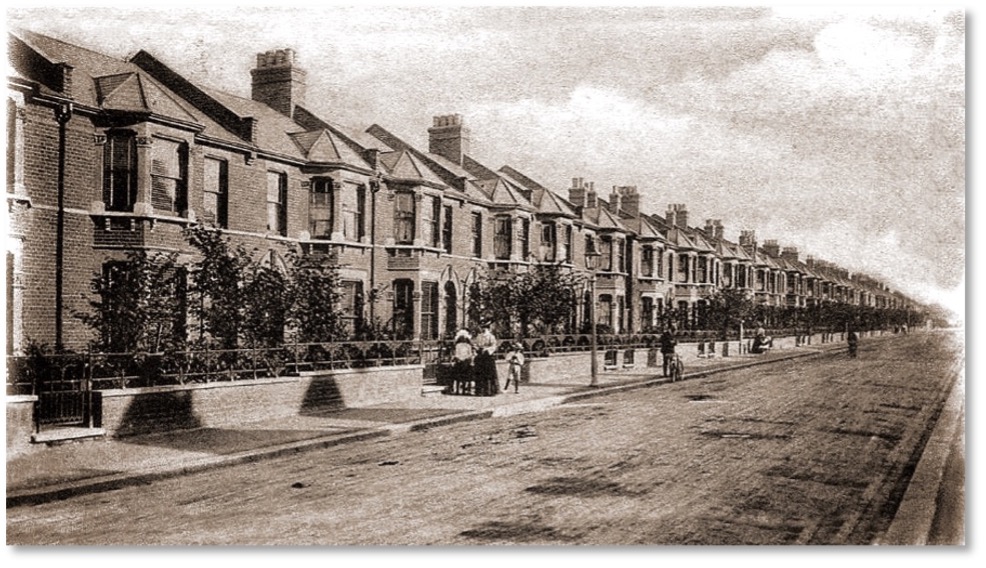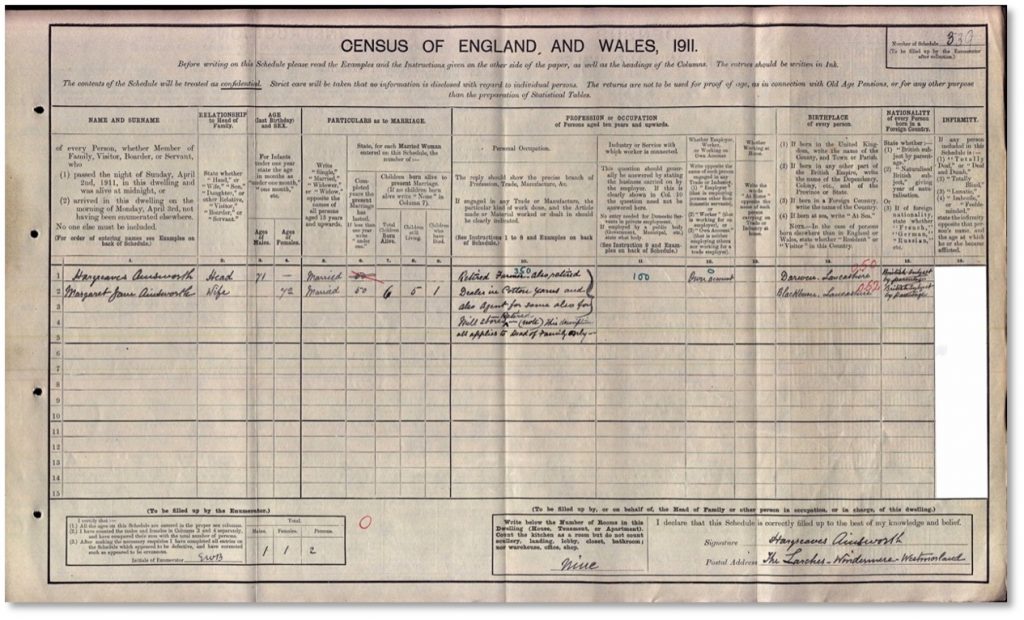Tucked away in an unfashionable corner of south-east London, nowhere near a tube stop, and without a pub in sight, is an enormous housing estate, built between 1896 and 1911.

Archibald Cameron Corbett c 1880
It was the brainchild of Archibald Corbett, who was born in Glasgow in 1856. In the 1860’s Corbett’s ambitious father moved his family down to London in pursuit of entrepreneurial riches, and started a house-building company. When his father died relatively young, Archibald took on the business, and set about riding the expanding wave of London suburb creation, made possible by the development of the railways.
Proud of his Scottish roots, Corbett named the 27 streets of his new estate after the places he had known as a child in Glasgow and further afield. Over a 15 year construction period, he covered 280 acres of farmland with more than 3,000 houses, plus shopping parades, schools and churches.
There was a range of houses to suit the different social classes of the day: in 1898 the upper middle classes could buy a six-bedroom Villa on one of the most prestigious streets for £379; whilst those lower down the social scale could get a four-bed property for £252, or a three-bed for a little less.

Top-of-the-range six-bedroom villas on Wellmeadow Road c 1910
Corbett encouraged property ownership by making the houses as easy as possible to buy on a cheap leasehold basis. He was keen on healthy living too: the density of housing was low by London standards and there was plenty of greenery, with large gardens and thousands of lime trees planted just inside the wrought iron railings-topped garden walls. He was also strictly anti-alcohol, banning all pubs and alcohol sales.

Early inhabitants in Minard Road
The 1911 Census

An example of a completed Census form from 1911
There was a grand total of 13,923 people listed by the census in the Corbett Estate’s 27 streets. However, 207 of them were visitors (probably staying just a night or two), so a more accurate figure for all those living here on the 2nd April 1911 (the date the Census took place) is 13,716.
They lived in 3,082 houses, which ranged from large 6-bed villas with servants quarters, to smaller 3-bed houses with a downstairs bathroom.
53% of residents were female, and 47% male, and most households contained a married couple: fully 89% when you look across the whole Estate (to put that into context, the figure for the UK as a whole in 2019 was 66%). The average number of people per house was 4.4 (although many contained far more of course: some families had seven children so a houseful of nine people wasn’t unusual). The average number of children per couple however was 2.2.
72% of people had moved into the Estate from other parts of what is now Greater London, and 28% came from further afield (Scotland, Australia, New Zealand, the USA and Brazil to mention a few places).
The average Estate couple were, as we’ve seen, young and married. The head of the household was most likely to be called William, his wife Mary, and their surname Smith. Their children would be called Winnifred and William (many people still named the first born male after themselves).
The Estate came into existence because a station had been opened at Hither Green in 1895, which enabled Corbett’s new residents to commute into the City. People did all kinds of jobs, but by far the most popular was working in an office as a Clerk. According to the Census, 20% of workers on the Estate were thus engaged, which is a huge figure for a single occupation.
At this time (just before the First World War), many people still employed servants: either a ‘daily maid’ or, in the wealthier families, a full-time live-in domestic worker. Some of the larger properties actually had two servants. Across the whole estate 9% of households employed a live-in servant.